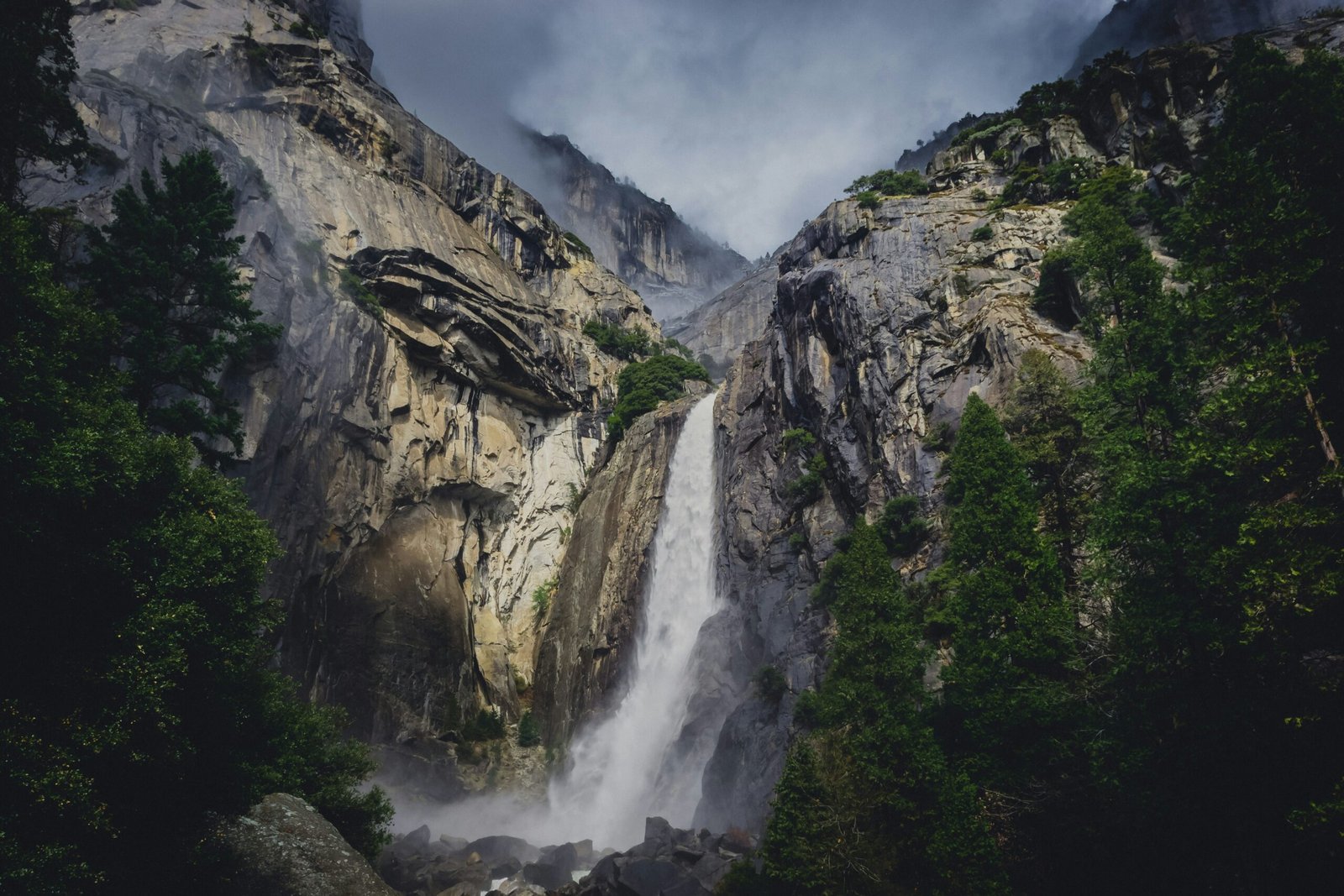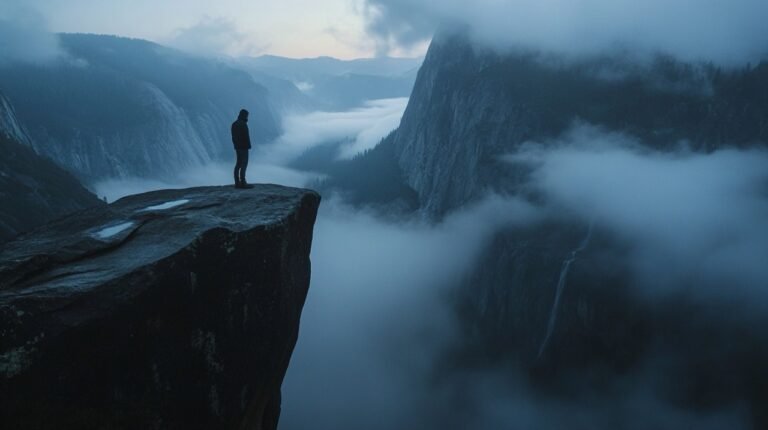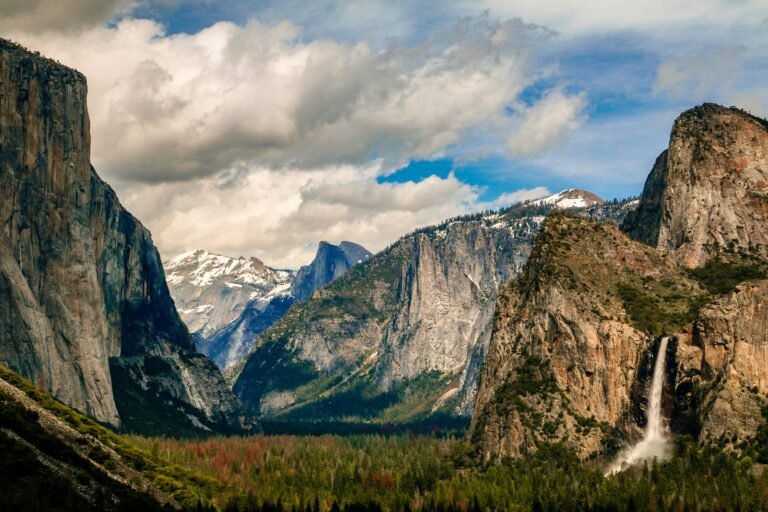Yosemite Waterfalls
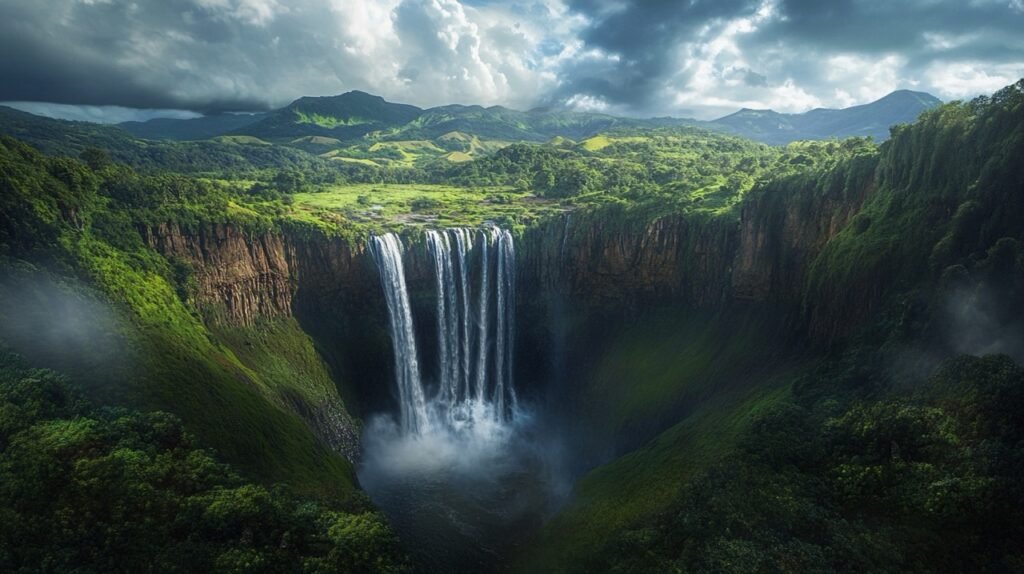
Introduction to Yosemite National Park
Yosemite National Park, smack dab in the heart of California’s Sierra Nevada, is a jaw-dropping mix of nature’s best hits spread over 1,187 square miles. Since way back in 1890, folks have been flocking here to soak up the sights, some just out of love for the outdoors, others to capture its beauty through a camera lens. It’s famous for those skyscraper-high granite cliffs, those timeless sequoias, and critters loaded with California charm. You’ll wander through a wild variety of nature’s nooks—from lush valleys to breezy alpine meadows.
Ready to plan your trip? Here’s a little weather heads-up: summers serve up dryness, but winters? They’re all about that snow! Mother Nature uses these elements to weave stories throughout the park. Visitors get to wander through scenes like the iconic Yosemite Valley, take in vistas from Glacier Point, and catch your breath at the famous Tunnel View.
| Feature | Description |
|---|---|
| Established | 1890 |
| Area | 1,187 square miles |
| Known For | Granite Cliffs, Waterfalls, Sequoias |
| Popular Attractions | Yosemite Falls, Half Dome, El Capitan |
| Best Time to Visit | Spring and Fall |
Importance of Yosemite’s Waterfalls
Yosemite’s waterfalls are like the rock stars of the park, commanding attention and drawing in millions annually. They’re nothing short of magnificent. Take Yosemite Falls, Bridalveil Fall, and Vernal Fall—all given their dramatic flair thanks to winter’s snowpack. This snowpack gets measured all over the park and keeps the waterfalls flowing strong, a vital artery for the whole place.
Yosemite Falls stands tall and mighty at 2,425 feet, ranking up there with the tallest in North America (NPS). It’s like a three-part harmony—Upper Yosemite Fall, the Middle Cascades, and Lower Yosemite Fall—together they perform a masterpiece for anyone lucky enough to watch.
| Waterfall | Height (ft) | Notable Feature |
|---|---|---|
| Yosemite Falls | 2,425 | Tallest waterfall in North America |
| Bridalveil Fall | 620 | Known for its year-round flow |
| Vernal Fall | 317 | Accessible via the Mist Trail |
These waterfalls are scene-stealers year-round. Springtime? They gush with snowmelt and roar with life. Come summer, they mellow but still mesmerize. In autumn and winter, the park trades in its liquid robes for a snowy cloak and the falls quietly delight.
But it’s not all about eye-candy. The waterfalls are vital for keeping the park’s ecological balance in check. They supply precious water to the plants and critters who call Yosemite home and keep the whole area’s environment in good health. For your visit to fall in love with these natural wonders, check out our tips on Yosemite National Park waterfalls and when’s the best time to visit Yosemite so you catch these beauties at their prime.
Majestic Waterfalls of Yosemite
Yosemite National Park might just be Mother Nature’s masterpiece. Its waterfalls are stunning creations that leave folks gobsmacked. Let’s roam through some of the park’s famous cascades that’ll knock your socks off.
Yosemite Falls: The Tallest Waterfall

Yosemite Falls is like the Shaquille O’Neal of waterfalls, holding the title as North America’s tallest. It’s really three waterfalls strung together: the Upper Fall, the Middle Cascades, and the Lower Fall. Together, they make for a heart-stopping drop of 2,425 feet. You’re gonna wanna tick this one off your travel bucket list when visiting Yosemite National Park.
| Part of the Falls | Height (feet) |
|---|---|
| Upper Yosemite Fall | 1,430 |
| Middle Cascades | 675 |
| Lower Yosemite Fall | 320 |
And while you’re in the hood, swing by the Yosemite Valley. It’s worth the stroll.
Horsetail Fall: The Firefall Phenomenon

Horsetail Fall is like nature’s trick with its jaw-dropping “Firefall” shindig in February. The sun hits just right, lighting it up like the Fourth of July with blazing oranges and reds.
Setting your visit around this spectacle is no bad idea, but peep the Yosemite weather ahead of time for clear skies.
Bridalveil Fall: A Year-Round Beauty
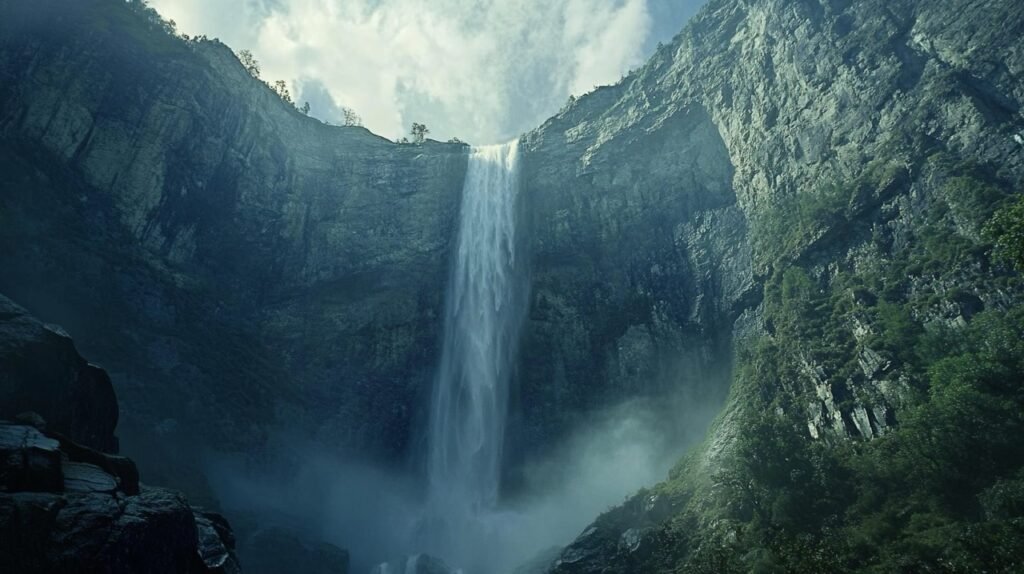
Bridalveil Fall flashes its beauty all year long with a dizzying drop of over 600 feet. Newbies often mix it up with Yosemite Falls, but once you’ve seen the view from spots like Tunnel View or Valley View, you’ll never forget it.
From spring’s roaring waters to autumn’s fiery leaves, Bridalveil always puts on a show.
Vernal Fall: A Year-Round Cascade

Trek the Mist Trail, and Vernal Fall will steal your gaze as the Merced River plunges more than 300 feet. During the juicy spring, rainbows sparkle at the base.
If you’re up for hiking, this trail gives you an eye-popping escapade along Yosemite hiking trails.
Nevada Fall: Beauty in All Seasons
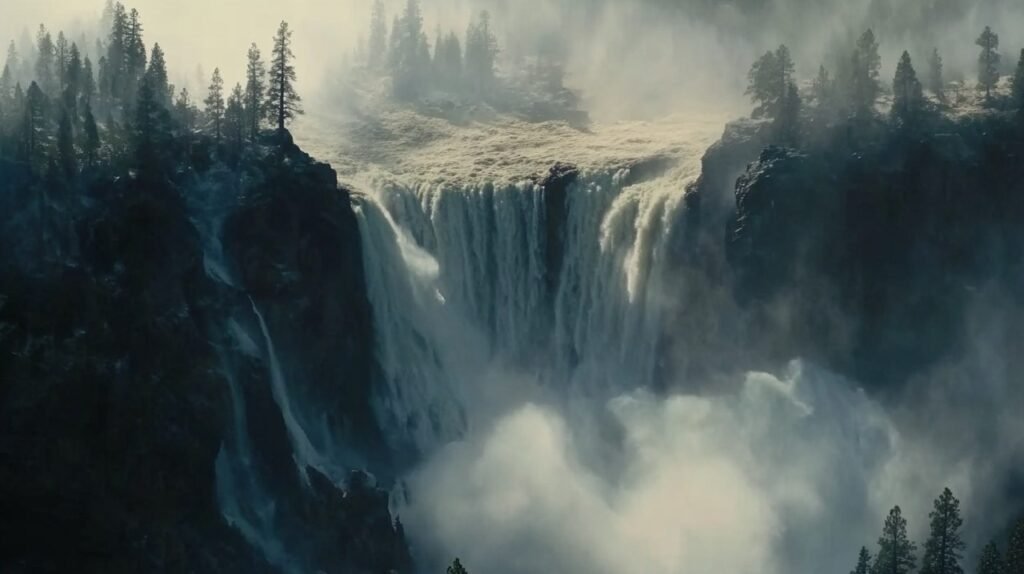
Strutting its stuff with a 594-foot drop, Nevada Fall is unmissable from the Mist Trail or the John Muir Trail. Any time of year, its mighty flow leaves you breathless.
Make the most of your outing by pairing it with a trek up Yosemite Half Dome for adrenaline-charged fun.
Sentinel Falls: A Scenic Marvel
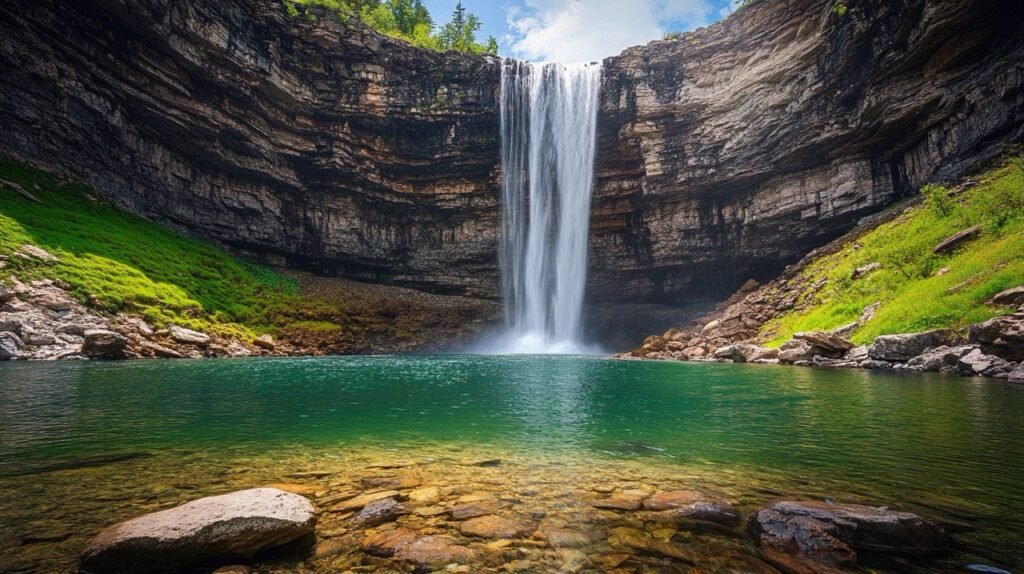
Sentinel Falls is a series of cascades doing their thing—with a wild 2,000-foot dive. Located near Sentinel Rock, this waterfall creates a perfect backdrop for jaw-dropping photos and peaceful moments.
A trip to Sentinel Falls is best buddy with Yosemite Glacier Point for some killer panoramic views.
Wapama Falls: A Hidden Gem

Don’t sleep on Wapama Falls—this beauty’s tucked away but brings its own razzle-dazzle with an 1,100-foot plunge. You’ll find a chill spot, crowd-free, in the Hetch Hetchy area.
Fancy exploring the hidden wonders? Peek at our guide to lesser-known waterfalls in Yosemite.
These enchanting waterfalls add a sprinkle of nature’s magic dust to the park. It’s no wonder visiting Yosemite National Park feels like stepping into a fairytale. Go ahead, plan that trip!
Impact of Climate Change on Waterfalls
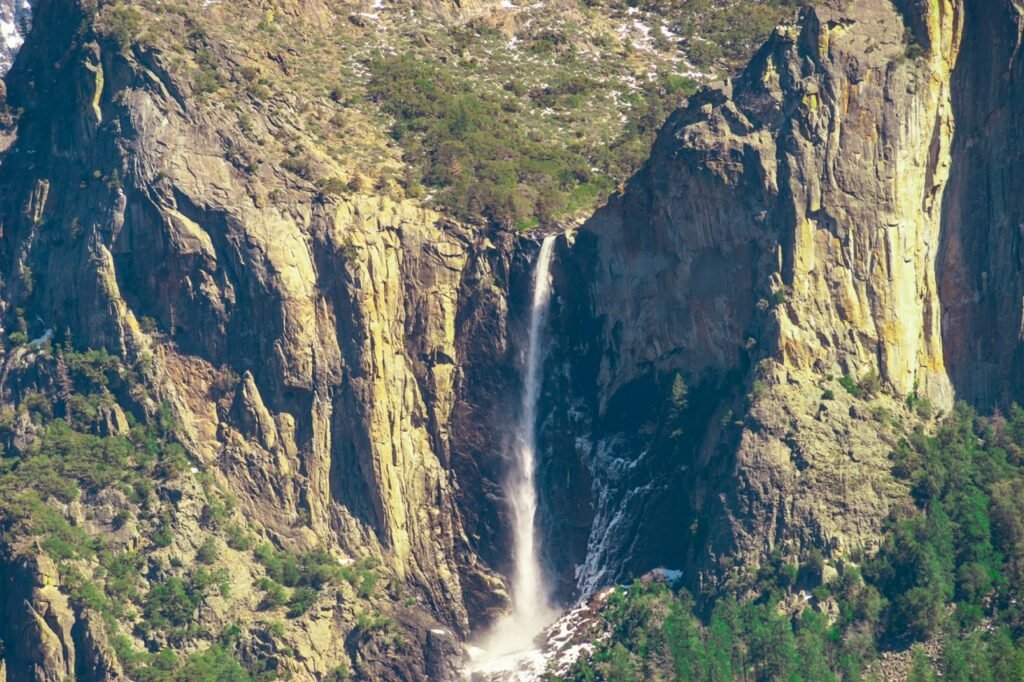
Climate Change and Yosemite Waterfalls
Ever notice how it feels warmer when you hike through Yosemite? That’s climate change making its mark. Those stunning waterfalls we all trek to see are under threat too. Experts say that by 2100, the temperature in the park could climb by as much as 10 degrees F. This heat-up isn’t doing the waterfalls any favors. The higher temps are speeding up the melting of glaciers and snowpacks that feed them. Initially, you might see more water spilling down those rocks, but come summer, things might dry up a bit. When streams are just trickles during peak visiting season, your photo ops might lose some of their Instagram sparkle.
Snowpack Influence on Waterfall Flow
Think of the Sierra Nevada snowpack as the park’s water savings account. Every winter, snow builds up, only to slowly release water during warmer months, keeping Yosemite’s falls flowing beautifully. But here’s the kicker: climate change is like a pesky hacker blowing up this water bank. As it gets hotter, we see less snow and that snow melts way sooner. This tweak in the timeline messes with the water supply that the park’s critters and plants depend on too.
| Time Frame | Temperature Rise Prediction (°F) |
|---|---|
| 2000 – 2100 | 6.7 – 10.3 |
| Source: NPS |
Earlier snowmelt means you might catch a rush of water in early spring, but by summer, waterfalls could trickle down to a whisper right when visitors are swarming in (NPS). And hey, it’s not just about the views. Imagine heading out for some boating and backpacking only to find your route dried up!
Timing your trip to make the most of Yosemite’s waterfalls is a bit like playing meteorologist. Keep tabs on Yosemite weather and check out the park’s forecast to pick the ideal time to visit. And if you’re feeling adventurous, look at our guide to the hidden waterfalls that might just surprise you with their charm.
Hydrological System of Yosemite
Yosemite National Park is not just about jaw-dropping views of towering rocks and majestic trees. It’s got a knack for turning melted snow into epic, thunderous waterfalls. Let’s take a closer look at this fascinating blend of nature and science.
Snowmelt and Waterfall Flow
So, here’s the deal: snow is kind of like Yosemite’s secret sauce. The magic behind Yosemite’s waterfalls, like the famous Yosemite Falls, is all in the snowmelt. The colder months pile up the snow, and as spring comes knocking, it all starts to melt.
| Waterfall | Primary Water Source |
|---|---|
| Yosemite Falls | Snowmelt |
| Bridalveil Fall | Snowmelt |
| Vernal Fall | Snowmelt |
| Nevada Fall | Snowmelt |
| Horsetail Fall | Snowmelt |
When the sun warms those high spots, old man winter swaps his snow hat for a raincoat. This early melt means those waterfalls are showing off big-time in the chillier months, leaving the place a bit dry come July. If you want to see the waterfalls in their full raging glory, timing is everything. Make sure to swing by our guide on the best time to visit Yosemite for more deets.
Importance of Snowpack in Yosemite
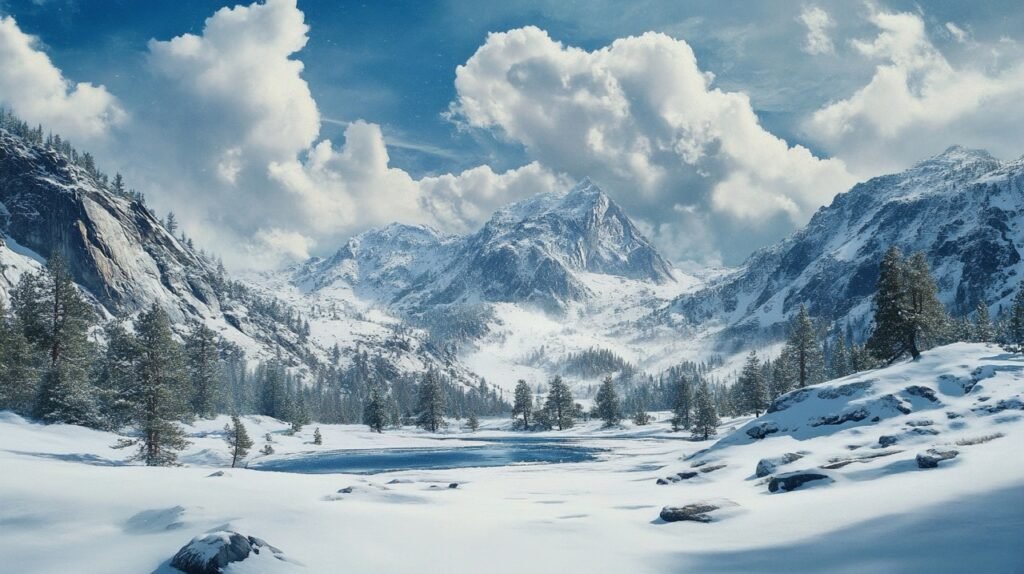
The snowpack isn’t just a spring fling—it’s Yosemite’s life support. After the rush of spring rivers and waterfalls chills out, the melting snow keeps whispering through the park all summer long. This slow drip is like a secret recipe for keeping everything from the wildflowers to those giant sequoias looking great.
And hey, it’s not just about the park. That snow trickle can hitch a ride all the way to San Francisco’s faucets. A flake in Tuolumne Meadows doesn’t just stop there—by June, it’s touring California’s taps. The Sierra Nevada snowpack? It’s a real heavyweight, providing 60% of the state’s freshwater and 75% of its farm water (NPS).
| Region | Fresh Water Source | Agricultural Water Source |
|---|---|---|
| California | 60% from Sierra Nevada snowpack | 75% from Sierra Nevada snowpack |
Getting to grips with how Yosemite’s snow and water tick makes visiting the park even cooler. If you’re keen to dive into more hidden corners of the park, mosey on over to the Yosemite National Park section. For a deeper dive into Yosemite’s weather quirks and valley vibes, these resources on yosemite weather and yosemite valley offer a treasure trove of info.
Conservation Efforts in Yosemite
Yosemite National Park’s beauty demands some real TLC. We’re talking awe-inspiring waterfalls and breathtaking nature that we’d love to keep around for generations. Here’s the lowdown on what’s being done to keep this natural masterpiece ticking.
Fire Management in Yosemite
Now, when it comes to fires, Yosemite’s got a pretty slick setup. Three main tactics keep those flames playing nice with nature: prescribed fire, mechanical thinning, and wildland fire use. Sounds fancy, right? But it’s all about protecting people, property, and everything nature’s got going on (National Park Service).
- Prescribed Fire: Lighting a fire on purpose? Yep. Under the right conditions, these controlled burns keep unruly wildfires at bay.
- Mechanical Thinning: Think of it as a haircut for trees. Trim the excess and reduce the chances of a big blaze getting too cozy.
- Wildland Fire Use: Sometimes Mother Nature starts a fire, and they just let it do its thing but with a watchful eye to make sure it helps rather than harms.
These moves keep fire doing its natural job, helping the forests and all critters living there stay healthy and strong.
Air Pollution Challenges
Next up, the air we breathe. Pollution’s been crashing the party at Yosemite, coming from all over the place. So, what’s being done? Well, the National Park Service has some tricks up its sleeves (National Park Service):
- Monitoring Programs: Like a neighborhood watch, but for pollution. Keeping tabs on air quality to spot the troublemakers.
- Research Support: Teaming up with science whizzes to study what these pollutants are up to.
- Visitor Education: Giving visitors the 411 on how to tread lightly on this beautiful land.
Fighting air pollution is key to keeping Yosemite’s wildlife happy and the air fresh for us folks visiting.
Night Sky Preservation
Ah, the night sky. You know the stars are doing something right when folks cross states just to see them. But light pollution is a bit of a party pooper, spilling over from the San Joaquin Valley. Here’s how they keep the stars shining bright in Yosemite (National Park Service):
- Sky Brightness Measurement: Keeping track of how twinkly the stars are.
- Stray Light Mitigation: It’s all about dimming down unnecessary lights and using nifty lighting that keeps things dark.
Yosemite’s night sky is the stuff of legend, and it’s crucial to keep it that way. So when you head there, wander around Yosemite Valley and soak up all the epic views.
Keeping these conservation efforts rolling is the name of the game for Yosemite National Park. It’s not just about those jaw-dropping waterfalls but also ensuring every visitor has a showstopping experience. Thinking about dropping by? Check out our tips for Yosemite National Park and Yosemite Valley Lodging.
Must-Know Nuggets About Yosemite Waterfalls
Quirky Traits of Yosemite’s Falls
Yosemite National Park is like a big box of awesome waterfalls. Each one has its own thing going on that makes it a must-see when you’re wandering around the park.
- Yosemite Falls: Standing proud as the tallest waterfall in North America, Yosemite Falls has three separate acts: Upper Yosemite Fall, middle cascades, and Lower Yosemite Fall. It all adds up to a mind-boggling 2,425 feet high, making it the king of all falls.
- Ribbon Fall: This bad boy’s got a single drop of 1,612 feet, holding the title for the longest single-drop waterfall across the continent.
- Horsetail Fall: Every February, this beauty puts on the Firefall show, like nature’s own light show. When the sun hits just right, it glows with fiery oranges and reds, making photographers go gaga (Flying Dawn Marie).
- Bridalveil Fall: Some folks mistake it for Yosemite Falls at first glance, but Bridalveil Fall is its own beast, diving over 600 feet. You can spot it from iconic hangouts like Tunnel View and Valley View (Flying Dawn Marie).
- Vernal Fall: On the Mist Trail, this cool cascade tumbles down over 300 feet. Come spring, the rainbows at its base are the stuff of dreams.
Yosemite’s Under-the-Radar Falls
While the famous ones hog the limelight, some lesser-known falls in Yosemite are worth a gander too.
- Chilnualna Falls: Tucked away near Wawona, this is for those in-the-know explorers. It spills over multiple drops totaling 2,000 feet. The hike here is less crowded, and the views? Oh, they’re pretty sweet.
- Illilouette Fall: Find it on the Panorama Trail. It takes a graceful 370-foot dive and rewards you with eye-popping views of Glacier Point. It’s the perfect spot for hikers who want a bit of peace with their adventure.
- Lehamite Falls: Deep in Indian Canyon, it’s a hidden season-dependent gem that drops almost 1,180 feet. Catch it during the spring melt and let it take your breath away.
Here’s a quick rundown of these under-the-radar wonders:
| Waterfall | Location | Height (Feet) | Accessibility |
|---|---|---|---|
| Chilnualna Falls | Near Wawona | 2,000 | Moderate hike |
| Illilouette Fall | Panorama Trail | 370 | Moderate hike |
| Lehamite Falls | Indian Canyon | 1,180 | Seasonal, remote |
When you’re planning your Yosemite trip, give these hidden gems a peek. They offer a chance to soak up the park’s beauty without elbow-to-elbow tourists.
Make sure to check out the latest Yosemite weather and Yosemite map to keep things smooth. Enjoy the adventure!

